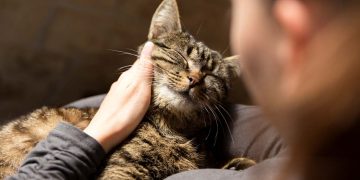How to Dispose of Cat Litter
Only a few people today realize that clay based cat litter has only been around for about 70 years. Prior to Ed Lowe inventing and marketing his “Kitty Litter” in 1947, most folks just put their cats outside at night. Some cat owners did let their pets stay in at night, but since cat litter did not exist, those hearty souls used what was freely at hand. This included ash or sand in an old pot or box. This was messy, stinky and unsanitary, so cat owners quickly took to the new litter.
While the new clay cat litter worked well, it did not solve a basic problem. What does one do with used litter? People could not flush it since the clay clogged toilets, accumulated in city sewage facilities and wreaked havoc on septic tank systems. Regular clay litter is heavy and it will not degrade over time. In fact, most waste collection officials do not like clay cat litter that never breaks down in landfills. Environmentalists hate heavy clay cat litter for its huge carbon footprint. So what are the options?
This article attempts to answer that question by presenting some of the newer, safer and flushable cat litter products. So, we ask that all of our cat parents please read on to learn more about some newer, non clay products.
Non Clay Cat Litter Products
These cat litter products are mainly based on the desire and need for safer, lighter and more earth friendly litter ingredients. Much research and testing has gone into this search for lighter, more convenient and less harmful cat litter ingredients. The result has been new products using innovative ingredients made from wood pulp, newspaper, wheat, corn, coconut and grass seed.
Flushable Litters
These products are nice alternatives to clay but they do not always meet their flushable toilet disposal claims. Some will cause plumbing problems, so while they claim to be flushable, it is still a better idea to properly dispose of these in the trash or by composting if possible. These products are preferred by many folks because they are mostly dust free and much lighter than clay litters. Some suggested products are:
- CocoKitty
- Better Way
- Ökocat
- World's Best
Lightweight and Dust Free Litters
These non clay litter products are preferred by many simply because they are lighter and smell better than most clay based litters. These are best for asthmatics and anyone with breathing issues. For homes with multiple pets or children, please note that these products are hypoallergenic and dust free so they are healthier for everyone, cats too!
Some suggested products are:
- CatSpot Litter
- Purina Yesterday's News
- Rufus & Coco Wee Kitty
- World's Best
Newer Altered Clay Based Litters
After much research and testing some companies have introduced lighter and less harmful clay cat litter. These products do contain clay but with a twist―the clay has been formulated to be lighter, less dusty and less harmful to people, pets and the planet. These products do contain clay though, so you should never flush them. Always put these litters into the trash. Some suggested products are:
- Purina Tidy Cats LightWeight
- Fresh Step
- Dr. Elsey's
- Nature's Miracle
You May Also Like:
Related Search Topics (Ads):
Proper Disposal of Cat Litter
Flush, compost or trash―which is the best way to dispose of used litter? Perhaps this old mantra says it best, “when in doubt, throw it out”.
It is usually not a good idea to flush cat waste and litter down the toilet, even if the label says it is flushable. Why? There are two main reasons. First, because cat waste can contain parasites like the protozoan toxoplasmosis gondii, which is transmittable to humans and wildlife. This organism is highly infectious and its eggs can linger in the toilet, sewer line and waste treatment plant. It will eventually end up in rivers, lakes and seas where the protozoa can flourish and devastate wildlife. Second, because these flushable cat litter products will build up in your drains and the city sewer lines over time. City wastewater plants simply are not capable of treating or processing all the components of cat feces. So, do not flush it!
Composting can be done with some of the non clay and non chemical plant based litters. However, it is crucial that the compost heats to at least 145F and is applied only to non food flower gardens or lawns. It should never be applied to vegetable, fruit or herb growing spaces. Not all plant based cat litter products can be composted. Some may contain chemicals or other unsafe or non degradable materials. Be sure to read the label first and follow the manufacturer’s composting directions. And, if none are given, then do not compost it.
Until a much better process comes along, putting used cat litter in the trash remains the most prominent and safest way to dispose of it. However, you should use vegetable based or paper trash bags for this. These will quickly decompose in the landfill reducing your pet waste volume and carbon footprint. Using the lighter, non clay or newer clay litters that require less frequent disposal are hugely helpful as well.
What to Take Away From This
Whether you have one cat or several and prefer the non clay litter choices or the new and improved clay products, you will want a product that is easy to use and easy to dispose. We hope this brief article helps with your cat parenting.
